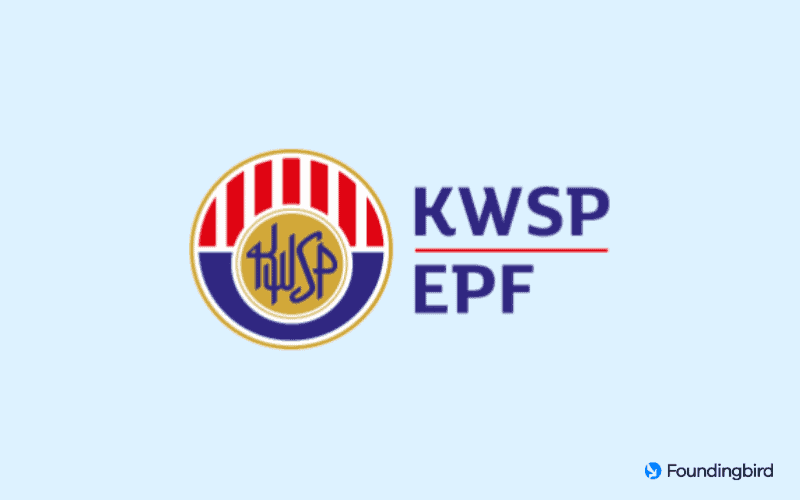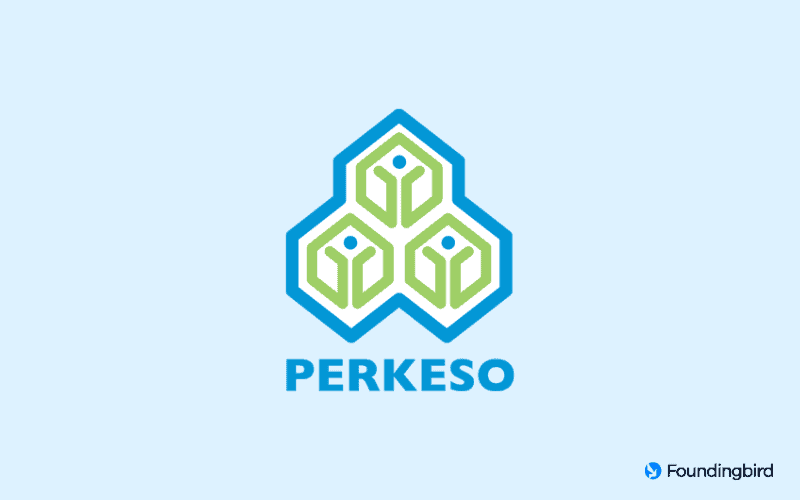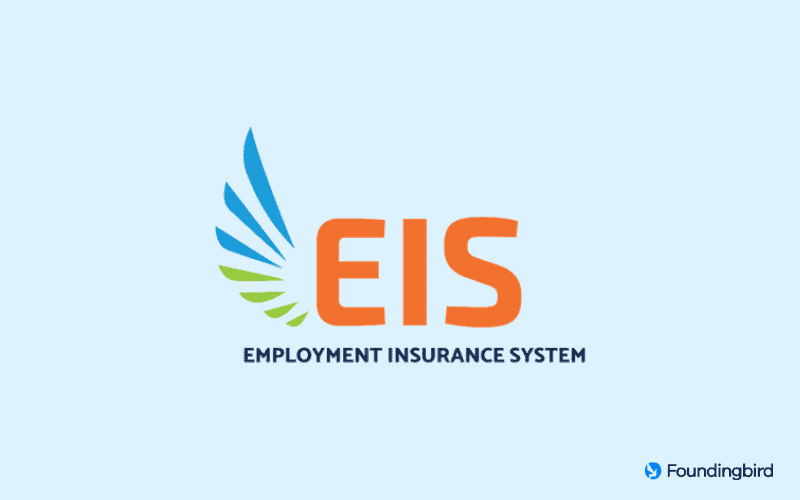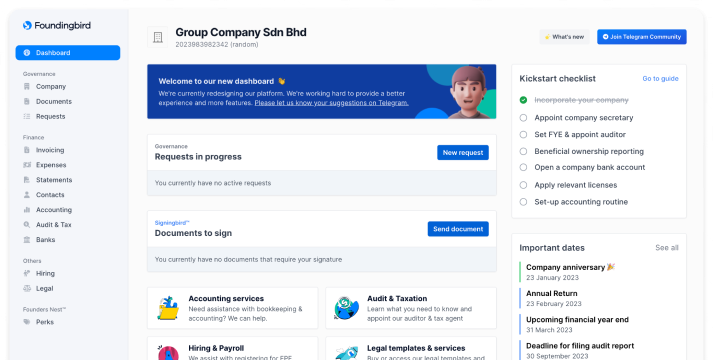Employer contribution of EPF, SOCSO, and EIS in Malaysia

You may have noticed deductions from your monthly gross salary as stated on your payslip during your time as an employee before starting a company. Now that you are an employer, there are some monthly contributions that you have to make towards Employee Provident Fund (or KWSP in Malay) and Social Security Organisation (or PERKESO in Malay) for your employees' benefits as required by the laws in Malaysia, namely EPF, SOCSO, and EIS.
1. Employees Provident Fund (EPF) contribution

Governed under the Employee Provident Fund Act 1991, EPF is a retirement saving scheme for employees who are liable to contribute EPF in Malaysia in which the savings contributed will be managed and invested under Simpanan Konvensional or Simpanan Shariah. The saving is comprised of the employee’s and employer's monthly contributions and yearly dividends earned.
Monetary payments that are subject to EPF contribution are:
- Salaries
- Payment for unutilised annual or medical leave
- Bonuses
- Allowances (with some exceptions)
- Commissions
- Incentives
- Arrears of wages
- Wages for maternity leave, study leave, half-day leave
- Other contractual payments or otherwise
- Service charges such as tips
- Overtime payments, including payments for work carried out on rest days and public holidays
- Gratuity (payment to employee payable at the end of a service period or upon voluntary resignation)
- Payment in lieu of notice of termination of service (payment given when employee’s service is terminated)
- Retirement benefits
- Termination benefits
- Travel allowances
- Director’s fee
- Gifts, including cash payments for holidays like Hari Raya, Christmas, etc.
- Benefits-in-kind and nonmonetary perquisites
Employer's responsibility on EPF contribution
- Register with the EPF as an employer within 7 days upon hiring the first employee.
- Register your employees as EPF members and keep their information updated.
- Provide salary statements to employees.
- Collect your employees’ share of EPF contribution and submit it to the EPF along with the employer's share.
Employer's and employee's contribution rate for EPF (as of the year 2021)
| Employee's status | Employer's EPF contribution rate | Employee's EPF contribution rate | ||
| Monthly salary rate | RM5,000 and below | More than RM5,000 | RM5,000 and below | More than RM5,000 |
| Malaysian age 60 and above | 4% | 0% | ||
| Malaysian below age 60 | 13% | 12% | 9% | |
| Permanent resident below age 60 | 13% | 12 | 9% | |
| Permanent resident age 60 and above | 6.5% | 6% | 5.5% | |
| Non-Malaysian below age 60 | RM5.00 | 9% | ||
| Non-Malaysian age 60 and above | RM5.00 | 5.5% | ||
Please bear in mind that the contribution amount should be calculated based on the contribution rate as stated in the Third Schedule of the EPF Act 1991, instead of using the exact percentage calculation, except for salaries that are more than RM20,000.00.
When should EPF contribution be paid?
The monthly payment of EPF contribution comprising of both employees' and employer’s share should be paid by the 15th of the month for the salary issued for the previous month. A late payment charge or a dividend will be imposed if the EPF contribution is not paid on time.How to make EPF payment?
The EPF contribution can be paid through the following channels:- e-Caruman website or mobile application
- Internet banking
- Bank agents of Bank Simpanan Nasional, Maybank, Public Bank, and RHB Bank
- EPF counters nationwide
2. Social Security Organization (SOCSO) contribution

There are 2 schemes that are governed under the Employees' Social Security Act 1969 – the Employment Injury Scheme that protects an employee against occupational accident or disease, and the Invalidity Scheme that insures an employee who is unable to work due to incurable or unlikely to be cured condition or death. It is compulsory for all Malaysian and permanent resident employees to register with SOCSO except for Federal and State Government permanent employees, domestic servants, and those who are self-employed. Foreign workers are protected under SOCSO as well since January 2019.
Monetary payments that are subject to SOCSO contribution are:
- Salaries
- Overtime payments
- Commissions
- Wages for maternity leave, study leave, half-day leave
- Other contractual payments or otherwise
- Any contribution payable by the employer towards any pension or provident fund
- Gratuity (payment to employee payable at the end of a service period or upon voluntary resignation)
- Any sum paid to cover expenses incurred by the employee in the course of his duties
- Bonuses
- Travel allowances
- Gifts, including cash payments for holidays like Hari Raya, Christmas, etc.
Employer's responsibility on SOCSO contribution
- Register yourself as an employer within 30 days upon hiring the first employee.
- Register your employees as SOCSO members and keep their information updated.
- Report all work-related accidents that befall their workers within 48 hours.
- Maintain a monthly record of employees' information and keep the information updated.
- Collect your employees’ share of SOCSO contribution and submit it to the SOCSO along with the employer's share.
Employer's and employee's contribution rate for SOCSO
| Employee's status | Employer's SOCSO contribution rate | Employee's SOCSO contribution rate |
| Age 60 and above | 1.25% (Employment Injury Scheme only) | 0% |
| Age below 60 | 1.75% (Employment Injury Scheme and Invalidity Scheme) | 0.5% |
| Foreign workers | 1.25% (Employment Injury Scheme only) | 0% |
Please bear in mind that the contribution amount should be calculated based on the contribution rate as stated in the Rate of Contribution table on the SOCSO website, instead of using the exact percentage calculation. The monthly contribution is capped at a monthly salary of RM4,000.
When should SOCSO contribution be paid?
The monthly payment of SOCSO contribution comprising of both employees' and employer’s share should be paid by the 15th of the month for the salary issued for the previous month. A late payment interest rate of 6% per year will be charged for each day of contribution not paid.How to make SOCSO payment?
The SOCSO contribution can be paid through the following channels:- PERKESO ASSIST portal
- Internet banking
- Cheque, money order, or postal order
- Bank counters
- Bank agents of Maybank, RHB Bank, and Public Bank
- SOCSO counters nationwide
3. Employment Insurance System (EIS) contribution

Governed under the Employment Insurance System Act 2017 and administered by SOCSO as well, this insurance protects employees aged 18 to 60 who have lost their employment except in the case of voluntary resignation, expiry of the contract, unconditional termination of the contract, completion of a project specified in a contract, retirement, and dismissal due to misconduct.
Employer's responsibility
You only need to register your employees once as SOCSO members and they are automatically entitled to EIS.Employer's and employee's contribution rate for EIS
| Employee's status | Employer's and employee's EIS contribution rate |
| Age 18 to 60 | 0.2% |
Please bear in mind that the contribution amount should be calculated based on the contribution rate as stated in the Second Schedule of the Employment Insurance System Act 2017, instead of using the exact percentage calculation. The monthly contribution is capped at a monthly salary of RM4,000.
When should EIS contribution be paid?
The EIS contribution for employees' and employer’s share is paid together with SOCSO contribution.How to make EIS payment?
The EIS contribution can be paid through the same channels as the SOCSO contribution.
Managing payrolls and contributions for EPF, SOCSO, and EIS for your employees can be a hassle as your business grows. It is recommended to engage a payroll service provider that takes care of your employees' registration with EPF and SOCSO, salary payments, payroll taxes, and also the mandatory contribution of EPF, SOCSO, and EIS.
——
Special thanks to HReasily for this content collaboration! HReasily is a fully integrated digital HR management solution to simplify traditional HR functions, available in 8 countries across Southeast Asia. Contact them now and let them handle your HR matters.
Table of Contents
We're the most convenient online platform for starting & managing a Sdn Bhd
- Incorporation of Sdn Bhd
- Company secretary
- Accounting & Bookkeeping
- Audit & Taxation
- HR & Payroll

